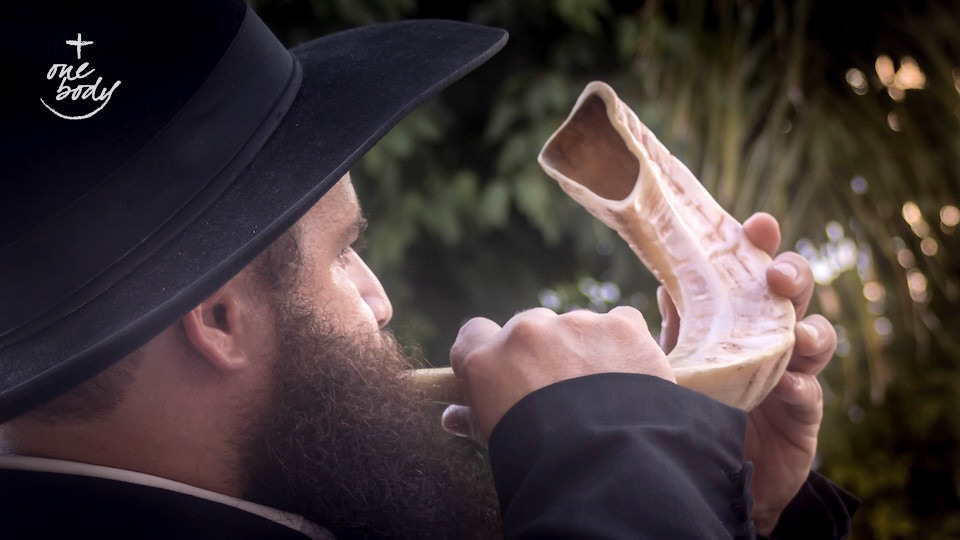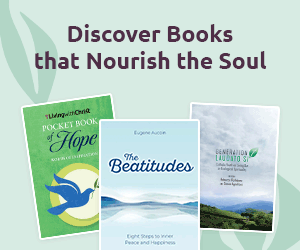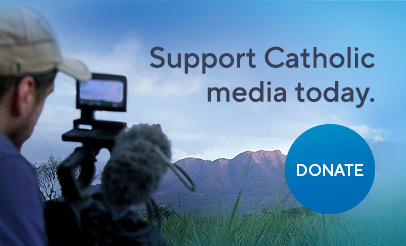

When the Shofar Sounds: What Can Christians Learn From Judaism’s High Holy Days? | One Body
Murray Watson
Saturday, October 12, 2024

The blowing of the shofar, or ram's horn, is a major point in the liturgies of the Jewish High Holy Days of Rosh Hashanah and Yom Kippur. Wikimedia Commons.
For this month’s One Body blog, we welcome Dr. Murray Watson as a guest contributor. For more on Jewish-Christian dialogue, we invite you to revisit our article from February, 2023 on the 1998 document from the Holy See’s Commission for Religious Relations with the Jews commemorating the Shoah. We also invite you to visit “Voices Together: Pioneers in Modern Jewish-Christian Dialogue,” a project between Scarboro Missions and Salt + Light Media.

 Dr. Murray Watson is a Catholic Biblical scholar and interfaith activist who has worked closely with Jewish and Muslim communities, both in Canada and in the Holy Land. He currently serves as the Adult Faith Formation Animator for the Simcoe Muskoka Catholic District School Board, based in Barrie, Ontario, and he regularly writes, speaks and teaches on Biblical and interreligious topics.
Dr. Murray Watson is a Catholic Biblical scholar and interfaith activist who has worked closely with Jewish and Muslim communities, both in Canada and in the Holy Land. He currently serves as the Adult Faith Formation Animator for the Simcoe Muskoka Catholic District School Board, based in Barrie, Ontario, and he regularly writes, speaks and teaches on Biblical and interreligious topics.

When the Shofar Sounds: What Can Christians Learn From Judaism’s High Holy Days?
by Murray Watson
When most of us speak of “the New Year,” we are generally talking about January 1, the day when our Western civil calendar rolls over from one year to the next. But we know that we live in a world of multiple “new years,” such as the new school year which begins in the autumn, the new liturgical year that starts with the First Sunday of Advent, fiscal years for businesses and NGO’s, and the new year that a wedding anniversary inaugurates. We also know that, in a diverse country like Canada, many of our neighbours follow religious and cultural calendars that mark various New Years, including the lunar new year (aka the “Chinese New Year”) celebrated by several Asian cultures. Both Islam and Judaism rely, either completely or partially, on a lunar calendar. This results in a year of 354 days — different from the solar calendar many of us in the Western Hemisphere use, which has 365 or 366 days. In Islam, this means that important holy days and seasons gradually “slip backwards” throughout the year, and can occur in any Western month. In Judaism, that variation is “corrected” by the insertion of an occasional “leap month,” which resets the calendar and ensures that important feasts occur, more or less, in the same seasons. Although there are multiple “new years” in Judaism, each having different purposes, the New Year that is familiar to most of us is Rosh Hashanah (Hebrew for “the head of the year”). This joyful yet introspective autumn festival launches a ten-day period of reflection called the “Days of Awe” or “High Holy Days,” and leads up to Yom Kippur, the Jewish Day of Atonement. This year, Rosh Hashanah began at sunset on October 2, and ended at sunset on October 4. Yom Kippur began before sunset on October 11 and concludes 25 hours later, after sunset tonight. Traditionally, Judaism speaks of Rosh Hashanah as the date of God’s creation of the universe—the ultimate beginning, and a summoning back to the first pages of the Book of Genesis. It is a date that reminds us that we are creatures, and that we have a Creator who has entrusted us with this world and all of its beauty to care for as stewards and partners. This challenges us to reflect on how well (or poorly) we have cared for the environment, which has been such a priority for Pope Francis during his papacy. In that commitment to care for this world, Jews and Christians are conscious of a shared vocation, and we know that that effort requires all of us, working together. One of the traditional Hebrew greetings around Rosh Hashanah is L’shanah tovah umetukah (“To a good and sweet year!”); we wish each other goodness, happiness and blessings. That “sweetness” is symbolized by the eating of sweet foods,(often slices of apple dipped in honey. In a society which so often seems to be characterized by anger, antagonism, and harsh language, wishing blessings and sweetness to others is a beautiful – and somewhat countercultural! – practice, which challenges us to use our words in ways that build up others, rather than tearing them down. With words such as these, we try to radiate positivity into the world, and contribute to a different, better type of conversation. Rosh Hashanah began the ten days which the Jewish calendar calls “the Days of Awe.” Mystical traditions speak of God weighing each person’s fate for the coming year on Rosh Hashanah—but that fate is not “sealed” or made decisive until Yom Kippur. During that week-and-a-half, many Jewish people look carefully over the past year, examining their conduct, and seeking forgiveness from anyone they may have harmed or offended. It is a time of teshuvah (repentance), not unlike the forty days that make up the Christian season of Lent. But it is also a time to ask ourselves: “What kind of person do I believe God wants me to be?” For both Jews and Christians, regularly making time for honest, prayerful self-examination is part of accountability and spiritual growth, and it reminds us of our responsibilities to God and to others. Yom Kippur is the most solemn day on the Jewish calendar. Many Jews will spend the day in the synagogue, in fasting and prayer, asking God’s mercy for themselves, their families, and the whole Jewish people. It is a day of profound humility: every sign of arrogance, comfort or prestige is shunned, and even leather shoes (symbols of luxury in ancient times) are set aside. It is not uncommon to see Jewish families walking to synagogue that day in Crocs or canvas sneakers. The liturgy is filled with poignant prayers and chants for God’s clemency and indulgence, that God would look to our good deeds and not our failures and sins. Both on Rosh Hashanah and Yom Kippur, an important moment in the liturgy is the sounding of the shofar or ram’s horn. Its piercing call summons human beings to faithfulness to their covenant commitments to God, and calls upon God to hear the prayers of a contrite people, who seek a year of grace and newness. Ancient traditions link the shofar to the horns of the ram that God provided as a substitute sacrifice for Isaac in Genesis22; rabbinic tradition says that the good deeds of our ancestors can have positive ripple effects for us also. In some mysterious way, their goodness is present in us, and continues to impact us today. The High Holy Days condense into one ten-day period many of the spiritual themes that Jews and Christians share in common: our awareness of our creatureliness—and of our Creator; our human fragility and dependence on God; our moral responsibilities to each other; our need for mercy, from God and from each other; and the possibility of renewal, repentance, and transformation. We are not slaves of our past, or of our mistakes. We can always choose to become more fully the people God has created us to be. Change is possible, and God blesses those efforts. As our Jewish neighbours welcome a new year (the year 5786 according to the traditional computation), we wish them joy and blessings, sweetness and health for the twelve months ahead. And, in solidarity with them, we walk the path of reflection and self-examination, asking ourselves how we might better contribute to what the Jewish tradition calls tikkun olam, the “healing of the world.” As our Church has repeatedly taught us over the last 60 years, that is a task that we — Jews and Christians together — are called to undertake, to shape, more and more, a world where goodness, justice, and love are our priorities and our guides. Dr. Murray Watson is a Catholic Biblical scholar and interfaith activist who has worked closely with Jewish and Muslim communities, both in Canada and in the Holy Land. He currently serves as the Adult Faith Formation Animator for the Simcoe Muskoka Catholic District School Board, based in Barrie, Ontario, and he regularly writes, speaks and teaches on Biblical and interreligious topics.
Dr. Murray Watson is a Catholic Biblical scholar and interfaith activist who has worked closely with Jewish and Muslim communities, both in Canada and in the Holy Land. He currently serves as the Adult Faith Formation Animator for the Simcoe Muskoka Catholic District School Board, based in Barrie, Ontario, and he regularly writes, speaks and teaches on Biblical and interreligious topics.Related Articles:
<<













